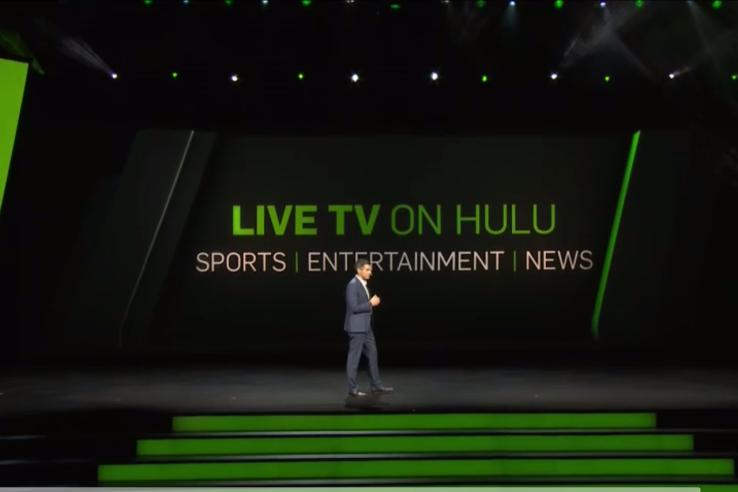Jumping on Amazon AMZN opportunity offered by 3Q 2016 earnings report
- We are using the weakness in Amazon’s (AMZN) shares resulting from disappointing earnings in the short-term to build our position for the long-term.
- We see no slowdown in the drivers and thematic tailwinds powering Amazon’s business and see its stronger than anticipated capital spending in the September quarter as Amazon preparing itself for future growth.
- Our price target remains $975 for AMZN shares.
When I made the decision earlier this year to take over the publishing of my newsletter, one of the reasons was my desire to be able to deliver to my readers the information when and how they need it — not based on a pre-set publishing calendar or an artificial 8-page content limit, but on how the market is reacting to news and developments and the details required in order for investors like you to have the information they need to make investment decisions.
Well, this week, and the unfolding events that have occurred, demonstrate exactly what I was thinking.
First, on Tuesday, we sent out the alert regarding our exiting of our Sherwin Williams (SHW) and Whirlpool Corp. (WHR) positions, as well as adjusting our target price on Under Armour (UA). Then on Wednesday, we published our weekly issue of Tematica Investing, but quickly followed that up on Thursday with an alert on Dycom Industries (DY) and an opportunity to scale into that position as the market was over-reacting to news about Google exiting the Fiber business.
Well, we’re now back again today with a similar scenario, this time surrounding Amazon’s (AMZN) earnings report and the market’s reaction to that . . .
Last night Amazon reported September quarter earnings of $0.52 per share that fell well short of the $0.78 per share consensus expectation for the quarter and the $0.17 per share achieved in the year-ago quarter. September quarter revenues rose 29% year over year to $32.71 billion, which was modestly ahead of the expected $32.65 billion. Also weighing on the shares was the company’s guidance for the current quarter that called for revenue to be in the range of $42-$45.5 billion, up 17 to 27 percent year over year, with operating income between $0-$1.25 billion vs. consensus expectations of $44.65 billion in revenue.
No, that’s not a typo on the operating profit guidance; once again Amazon has given such wide guidance — anywhere from $0 up to $1.25 billion — we could steer an aircraft carrier through it.
That combination led to AMZN shares falling to the $745 level before recovering to $772, down just over 5.5 percent in after-market trading, following the company’s earnings call.
As we have said previously when it comes to Amazon and quarterly earnings, the wildcard to watch out for is management’s often cryptic outlook and investment spending relative to expectations. This was exactly the case as investment spending at both the North American and International Retail businesses weighed on operating margins, leading them to fall to 1.8 percent in the 3Q 2016 quarter from 4.2 percent in 2Q 2016.
Stronger than expected spending during the September quarter, included initiatives to ramp up for what is expected to be a barn-burner of consumer spending on digital commerce this holiday shopping season. We’ve talked about this accelerating shift over the last several months, and consulting firm Deloitte sees digital holiday shopping rivaling brick & mortar retail spending for the first time in 2016. Against that expectation, Amazon added 18 fulfillment centers during 3Q 2016 and another five in first few weeks of October. While these will help position Amazon well for the expected spending surge over the coming months, near-term, those new centers will weigh on margins, hence the lighter than expected operating performance in the current quarter. As these newer centers mature over the coming quarters, their margins should improve, especially as the incremental capacity they bring is absorbed by Fulfilled By Amazon (FBA) and other aspects of Amazon’s fulfillment network.
While the current market environment, which is very much in a “Shoot first, ask questions later” mood, is hitting Amazon shares, in the short-term, if we step back, Amazon continues to play the long game as it expands the scope and scale of its Prime umbrella.
On the earnings call last night, Amazon mentioned the importance of grocery and consumables. We expect to see a continued emphasis in these areas going forward as consumers, especially Millennials, continue to shift their shopping habits. Exiting the September quarter, Prime Fresh was in 40 cities across seven countries, compared to 17 a year ago. Amazon Restaurant Delivery (a part of the Prime Now offering) is in 19 metropolitan cities in the US, up from two last year. Amazon looks to further expand its fashion and apparel offering by courting additional brands and manufacturers. Another area of investment continues to be its International expansion, especially in India. Given the favorable demographics in that market — age, internet usage, rising disposable income — we see that opportunity helping drive long-term growth for Amazon’s International efforts. The same is true with its Prime Instant Video business, for which Amazon nearly doubled its investment spending in the second half of the year as it pursues worldwide rights for programming rather than doing so country by country.
To be clear, while such capital investments can put a sour taste in our mouths in the short run and are likely to reignite long-term profitability questions, we see the 3Q 2016 investment as a temporary spike ahead of the 2016 holiday season and lays the groundwork for future revenue gains.
Could the company have telegraphed its plans better?
Probably, but Amazon has always been tight-lipped about its plans, which we chalk up to the increasingly competitive nature of the industry; transparency with investors also means revealing the strategy to competitors.
In deciphering management’s commentary on the earnings conference call last night, we recognize the company will continue to invest for the long-term, but management has clearly signaled that spending will be lumpy. Reading between the lines, spending in the September quarter was one of those larger lumps. As the investment spending returns to roughly more normal levels and as the higher margin Amazon Web Services continues to account for a greater piece of the overall business mix, we see margins rebounding from 1.8 percent in the September quarter. Revenue from its Cloud business rose 55 percent year over year and nearly doubled its operating profits to $1.0 billion, which equates to an operating margin of 31.6 percent compared to normalized operating margins in the low-to-mid single digits for the retail facing business.
We are likely to see 2016 EPS estimates get trimmed back, not only for the 3Q 2016 miss, but also to reflect the five additional fulfillment centers that were added in early October. Even so, there is a high probability that Amazons’ overall operating profit dollars will move up from the $575 million achieved in the September quarter as the overall pace of investment returns to more normalized levels in the current quarter. With regard to 2017 EPS estimates, we are likely to see those get trimmed back from the $11 per share range to roughly $10 per share or so as Wall Street factors in incremental expectations for investment India, Video and Alexa/Echo. The good news for us is our $975 price target was well below many of the other recently hiked price target that were above $1,000. Even after pairing back 2017 expectations, our price target remains intact.
The bottom line is from time to time, market indigestion offers a favorable entry point into a company’s shares, especially if the long-term drivers and tailwinds remain intact. We‘ve seen that several times over the years with Amazon shares, and we see it once again today. We see no slowdown in the shift to digital commerce, streaming video consumption, and others drivers behind Amazon’s business.
With that in mind, we suspect many on Wall Street will give Amazon a pass on the September quarter as it remains the best-positioned company to capitalize on those tailwinds and drivers.
- We continue to rate AMZN share a Buy and are using this morning’s weakness as the long-term opportunity it is to scale into AMZN shares.
- Our price target for the shares remains $975.

Chris Versace
Chief Investment Officer
Tematica Research, LLC












